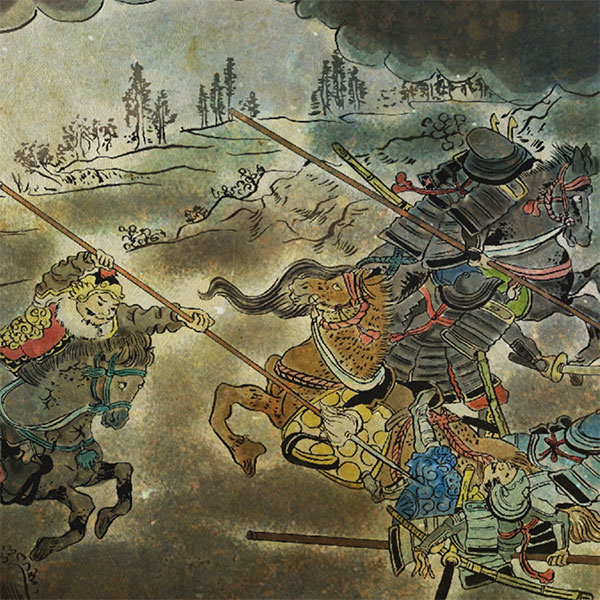- Ryukyu KingdomProspered through trade
- The Ryukyu Kingdom was a monarchy that existed in Okinawa Prefecture from 1429 to 1879. It developed through trade with East Asia, particularly China, Southeast Asia, and Japan, and built up its own unique culture. Even now that the kingdom has disappeared, there are still Ryukyu kings in Okinawa.

Shuri CastleNaha City, Okinawa Prefecture
- TOP
- Okinawa Prefecture
- Shuri Castle
| Other name | Imperial castle, Shuri castle, Nakayama |
|---|---|
| castle construction | not clear |
| address | 1-2 Shurikinjocho, Naha City, Okinawa Prefecture |
| telephone number | 098-886-2020 |
| Opening hours | 8:30-18:00 |
| closing day | First Wednesday of July and the next day |
| Admission fee | Adults: 400 yen, Junior high school students: 300 yen, Children: Elementary and junior high school students: 160 yen |
- Transportation access to Shuri Castle
- About 15 minutes walk from Yui Rail Shuri Station.
HISTORYShuri Castle, the center of the Ryukyu Kingdom
Shuri Castle was the center of the Ryukyu Kingdom, which was established in the early 15th century, and was used as the royal residence. After the Meiji period, some of the buildings were designated as national treasures, and it became a historic site that conveys the history of the Ryukyu Kingdom, but it was burned down during the Battle of Okinawa. Let's unravel the history of Shuri Castle.
- Construction of Shuri Castle ~ Ryukyu Kingdom
- Shuri Castle is said to have originally been built by the Chuzan during the Sanzan period, when the three kingdoms of Nanzan, Hokuzan, and Chuzan were fighting to unify the main island of Okinawa. The prevailing theory is that it was established around the end of the 13th century to the 14th century. Later, when Sho Hashi unified the three kingdoms and established the Ryukyu Dynasty, Shuri Castle came to be used as the residence of the Ryukyu royal family.
The Ryukyu Kingdom flourished through trade with China, other East Asian and Southeast Asian countries, and Japan. Shuri Castle was located in what is now Naha City, Okinawa Prefecture, on a hill overlooking Naha Port, which was a base for overseas trade, and was surrounded by curving castle walls. Records show that within the walls there were several buildings, including the king's residence, and that there was also land leveling for religious purposes. This style of castle construction is a common feature of Okinawan castles known as "Gusuku." Gusuku were built all over Okinawa during the Sanzan period, but many were destroyed in the conflicts that led to the establishment of the Ryukyu Dynasty, and only a few, including Shuri Castle, remain.
Shuri Castle is divided into an inner and outer castle wall, the inner wall was completed in the early 15th century, and the outer wall in the mid-16th century. The main front faces west, and the main buildings within the castle, such as the Seiden, are arranged along an east-west axis. As a country that prospered through trade, the buildings were designed with Chinese influences from Japanese architecture.
Shuri Castle was the king's residence and government office, as well as a place where the kingdom's religious rites were held. For this reason, many priestesses who served the gods, including religious leaders called "Kikoe Okimi," lived within the castle. There are also records showing that there were residential areas around Shuri Castle for people who worked in the arts, crafts, and performing arts.
Shuri Castle has burned down three times, at least according to records. The first time was during a civil war over succession to the throne known as the "Shiroburi Rebellion," during which the interior of Shuri Castle was almost entirely destroyed. The second burned down was in 1660, and the third in 1709. It is difficult to grow good quality timber on Okinawa's main island, so every time Shuri Castle burned down, it was rebuilt with timber provided by the Satsuma Domain. Additionally, reforestation projects were carried out in the northern part of Okinawa's main island in preparation for the rebuilding of Shuri Castle.
Shuri Castle continued to be the political, cultural and religious center of the Ryukyu Kingdom until 1879, when the last king, Sho Tai, was exiled by the Meiji government. - Shuri Castle after the Meiji Period
- After the Ryukyu Kingdom became Okinawa Prefecture as a result of Meiji government policy, Shuri Castle ceased to serve as the government office and the center of culture and religion. The grounds and buildings were used as an army barracks before being sold to Shuri City, where they were used as the school buildings for the girls' department of Shuri Elementary and Secondary School and Okinawa Prefectural Women's Technical School.
In the 1900s, the building began to deteriorate rapidly, and demolition of the main buildings, including the main hall, was considered. However, Tokyo Imperial University professors Chuta Ito and Yoshitaro Kamakura, who were researchers of Okinawan culture, opposed demolition and instead built an Okinawa shrine behind the main hall to make it subject to the Ancient Shrine and Temple Preservation Law at the time, and treated the main hall as a worship hall, allowing it to be restored using national funds.
As a result, Shuri Castle became the "Okinawa Shrine," and the successive kings of the Ryukyu Dynasty and Minamoto no Tametomo are enshrined here. Minamoto no Tametomo was enshrined here because of the legend that after he was defeated by Taira no Kiyomori in the Hogen Rebellion, he fled to Okinawa and his descendants founded the Chuzan Kingdom as King Shunten.
In 1925, the Seiden was designated a former national treasure, but during the Battle of Okinawa in the Pacific War, it was attacked by the US military as it served as the headquarters of the 32nd Japanese Army. Shuri Castle, including the Seiden, was destroyed, as were many of the cultural assets and historical books stored in the surrounding castle town and castle. Some of the cultural assets were plundered by the US military, and some were returned after the war.
After the war, the University of the Ryukyus was established on the site of Shuri Castle, but reconstruction began from the Shureimon Gate in 1958. When Okinawa Prefecture was returned to Japan in 1972, the site of Shuri Castle was designated a national historic site.
When the University of the Ryukyus moved to its current location in 1979, restoration of Shuri Castle began in earnest, and in 1992 the buildings centered around the Seiden (main hall), as well as the gates and castle grounds, were restored, and the Shuri Castle site became Shuri Castle Park. In 2000, the Shuri Castle site and the surrounding gusuku were registered as a World Heritage Site under the name "Gusuku and Related Properties of the Kingdom of the Ryukyus."
In 2006, it was registered as one of Japan's 100 Greatest Castles, but in 2019, a fire broke out again, destroying the main hall, north hall, and south hall. This is the fifth time in history that the castle has burned down. Currently, restoration work is underway on Shuri Castle, and all of the buildings that were destroyed by fire are scheduled to be rebuilt in 2026. - summary
- Shuri Castle is a valuable historical site of the Ryukyu Kingdom, with its own unique culture and history. During the Pacific War, all of the buildings from the Ryukyu Kingdom era were destroyed, but some of the remains and cultural assets remain, and the castle has been designated a World Heritage Site. Shuri Castle today is one of Okinawa's leading tourist destinations, attracting many visitors from both within Japan and overseas.
Read about incidents related to Shuri Castle
- Ryukyu invasionSatsuma and the Shimazu clan took control of Ryukyu.
- In 1609, the lord of the Satsuma domain, Tadatsune Shimazu (Iehisa) led his army to attack the Ryukyu Kingdom and take control of it. This was an incident known as the "Ryukyu Invasion." This incident is called the Shimazu invasion incident, Shimazu's entry into the Ryukyus, and the dispatch of troops to the Ryukyus.

History of the Ryukyu Kingdom, whose castle is Shuri Castle
| royal castle | Shuri Castle |
|---|---|
| old area | Ryukyu |
| main king | Mr. Takashi |













